The artist that I chose to study is Nirav Patel, who uses light and shadow to create interesting shapes and forms in his portraits. These portraits are an inspiration for my own portraits because I want to use concentrated beams of light in my portraits, just like Patel. The lighting in my portraits would play a huge role in the final outcome and the general atmosphere of the photos, and since the atmosphere is a key part of my portraits, I want to use my lighting intentionally and effectively. Patel’s portraits have this trait as they also have lighting as a key component, and a lot of his portraits have a similar atmosphere to what I want my portraits to have.
Here are some examples of his work:
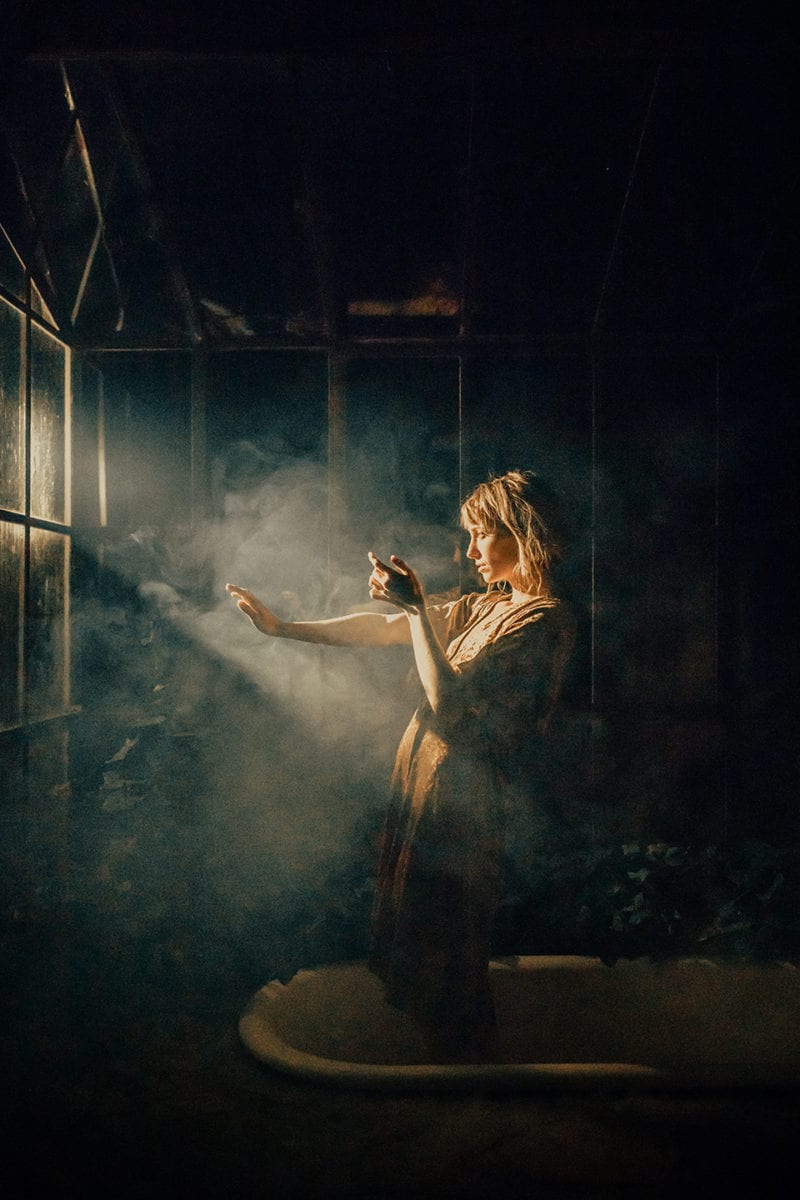
In this image, the subject is standing near the center of the image, with the top half of their body illuminated by light from the top left of the image. The swirling smoke, clear distinction between the light and shadows, and the muted color palette all add to the atmosphere and mood of this piece, creating a thought-evoking feel. The background is plain and in shadow, drawing most of the audience’s attention towards the light and the model. The pale warm yellow of the light also contrasts with the dark green of the shadows, and to me, this image gives the impression of reaching out for the light after a long period of darkness. I also particularly like the expression on the model’s face and their body language, as they look intense, concentrated, and about to back down but determined to forge onwards. It really adds a lot of emotion to the photo.
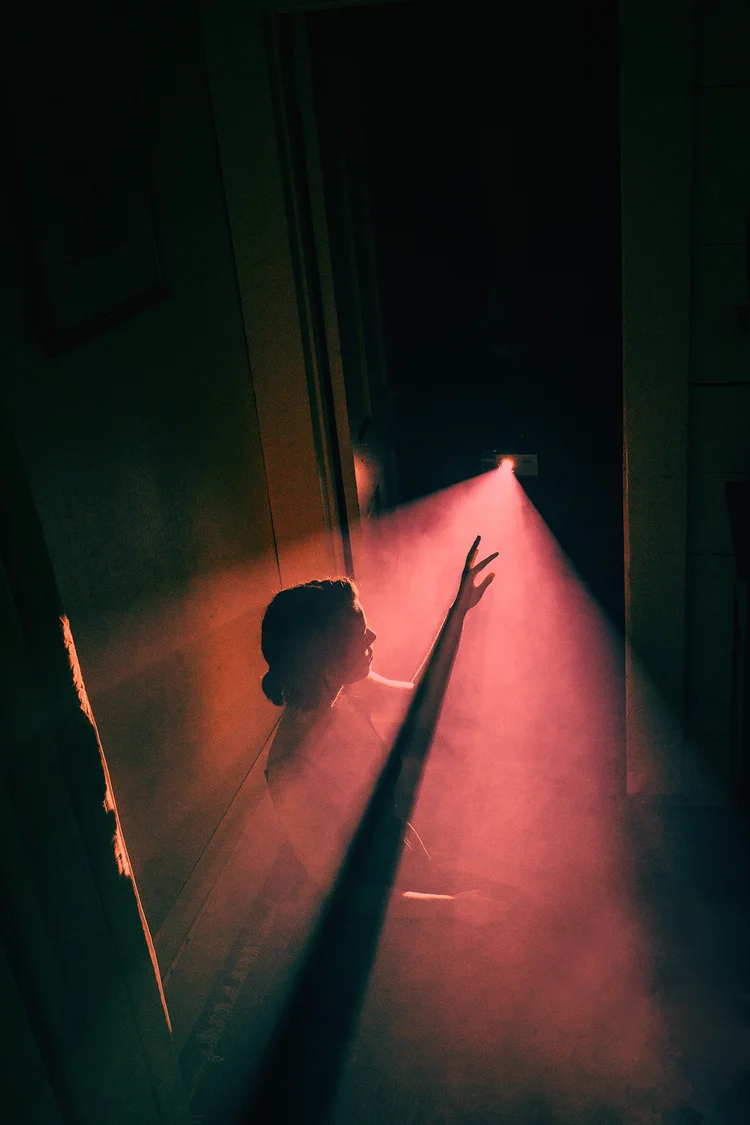
This image is interesting to me as it is almost entirely comprised of two main colors and a third in-between color, which instantly draws the viewer’s attention and also adds a unique characteristic to the image. Another interesting thing is that the model is facing away from the camera, and we can only see a little silhouette of their head and hand where they reach out to the light, creating a sense of intrigue (light and shadow seem to be a particularly consistent and integral theme in Patel’s work). The use of negative space also helps balance out the bright, contrasting light and shadows and also gives the impression of space, solitude, and introspection. The red color of the light is also directly in contrast with the green of the shadows, and this clash of colors turns what otherwise would have been a calmer piece into something much more energetic.
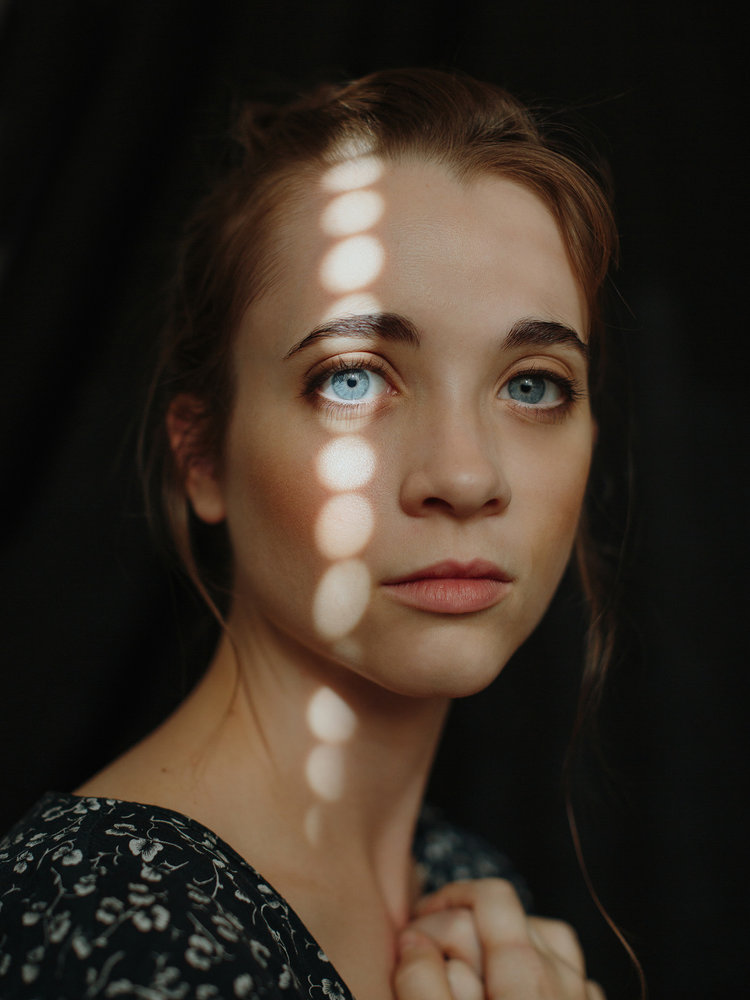
One thing that caught my attention in this image is the way the pattern of repeating circular lights travel across the model’s face – highlighting their eye in particular. Compared to the last two images, this one is much more focused on the model and their expression and is a close-up that only shows the model from the shoulders up instead of their full body like the others. This builds a sense of human connection with the model, as we are close enough to be able to see the details of their face, their hair, and other features. This feeling is also enhanced by the fact that the model is also looking directly at the camera, which gives the impression of making eye contact with the audience through the photo. Finally, this emphasis on the model’s face and eyes is brought together by the splash of light across their face, and ties all the other elements of the image together to create a cohesive whole.
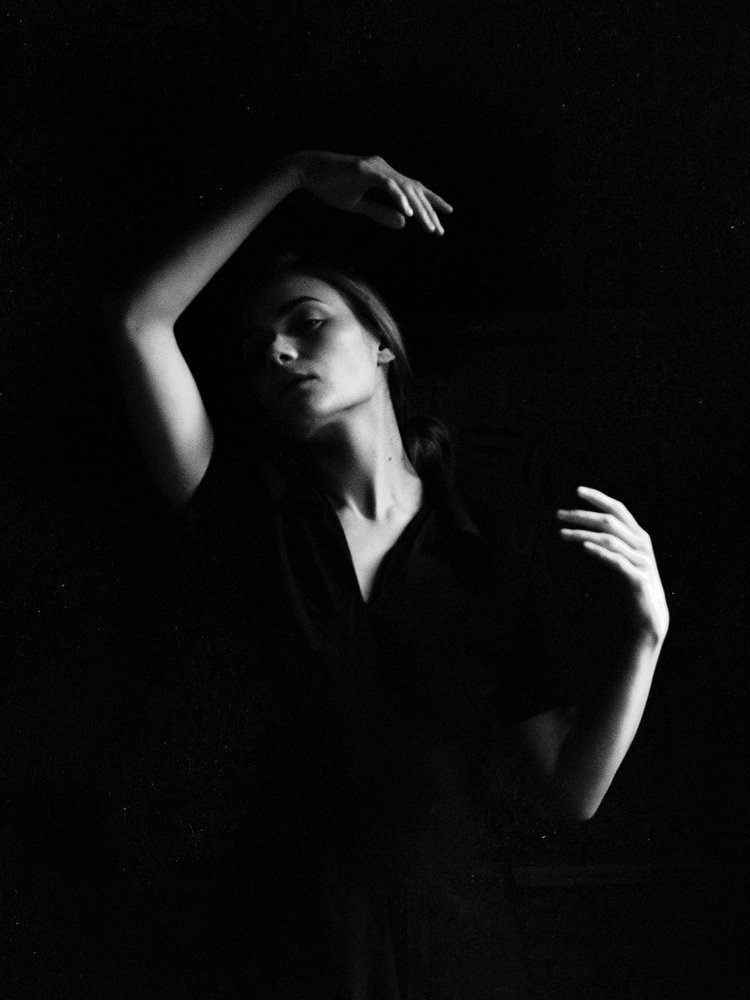
This image is interesting because, unlike the others, it doesn’t have a clear-cut beam of light, and instead is much more like what a “traditional” portrait looks like, with a light source that is not actually present in the photo itself. Instead, this image uses its monochrome nature to emphasize the light and shadows. The model melts seamlessly into the background and becomes part of the negative space, while their face, neck and arms are highlighted by the light source. Their pose and expression are also very interesting, as the arms and the tilt of the neck create a sort of flow throughout the image that also balances out the left and right sides and the top and bottom of the image. To me, the model almost looks like they’re in some sort of dance, and combined with the prominent shadows and the monochrome, abstract nature, this image gives me the impression of sleepwalking, hypnosis and other dream-like themes. This is definitely an interesting aesthetic choice and the high contrast and the melting-into-the-background is definitely something that would be cool to try in my portraits too.
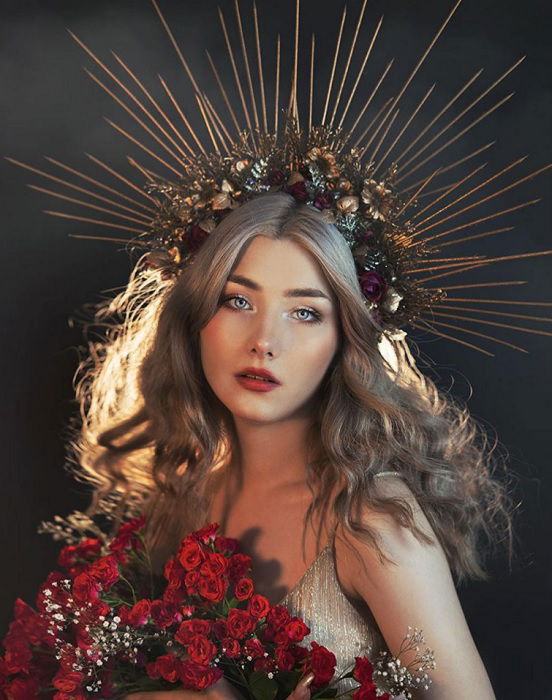
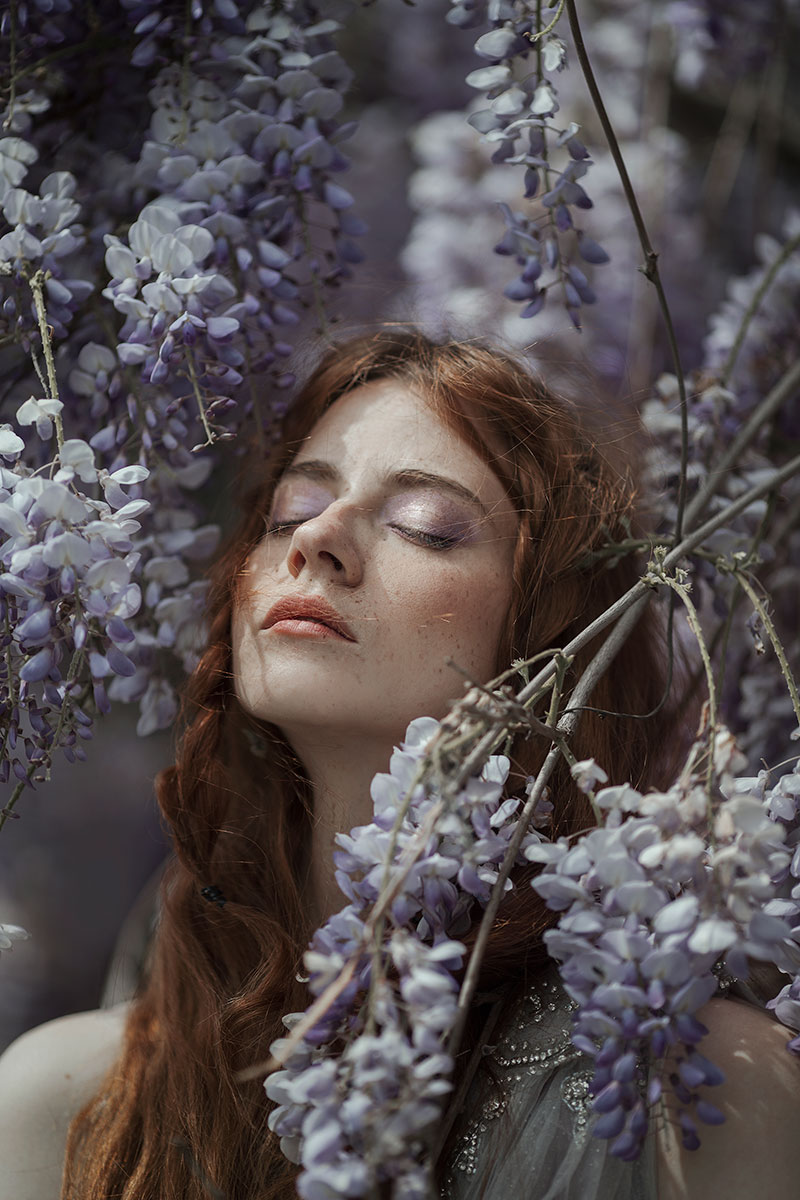
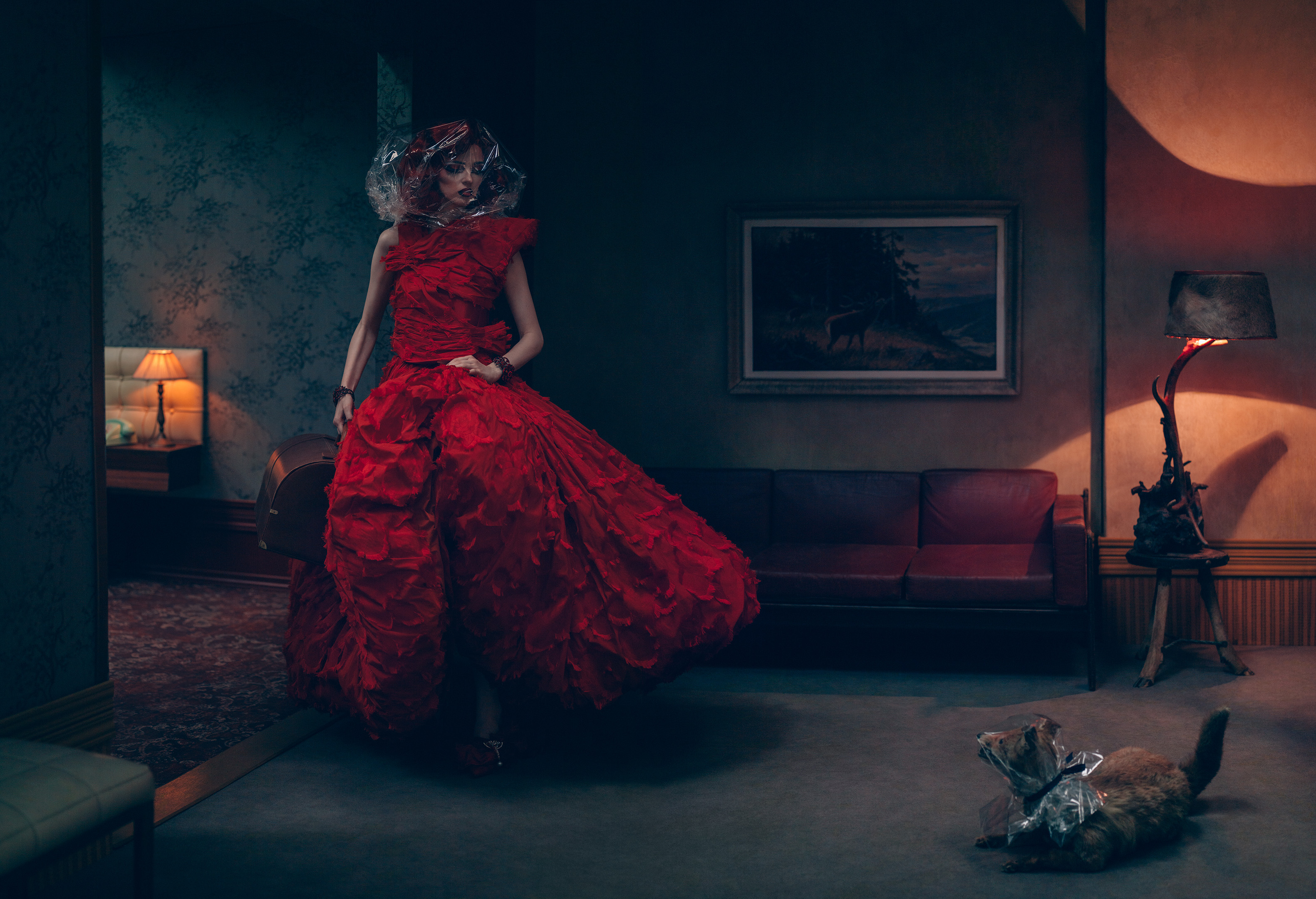
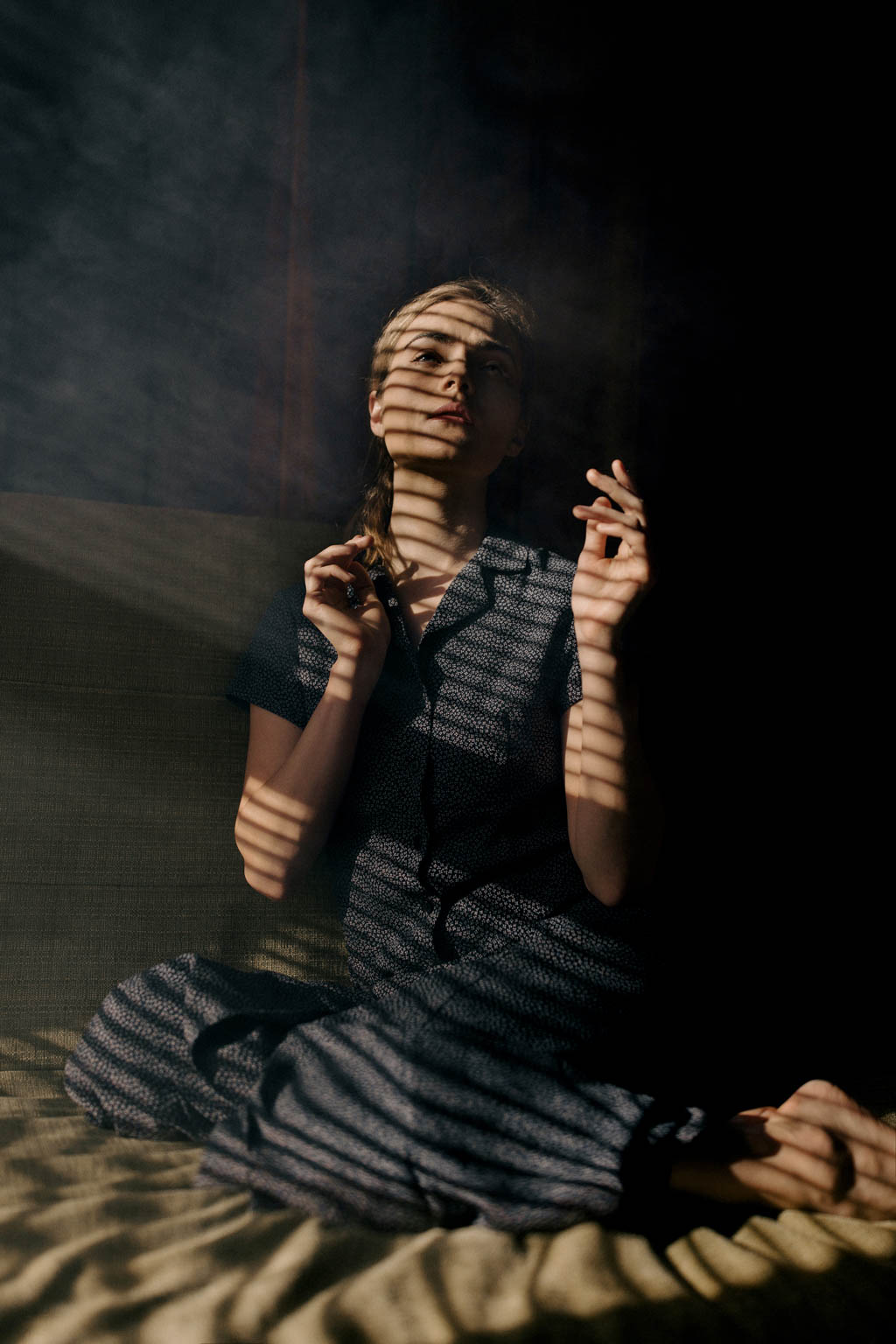
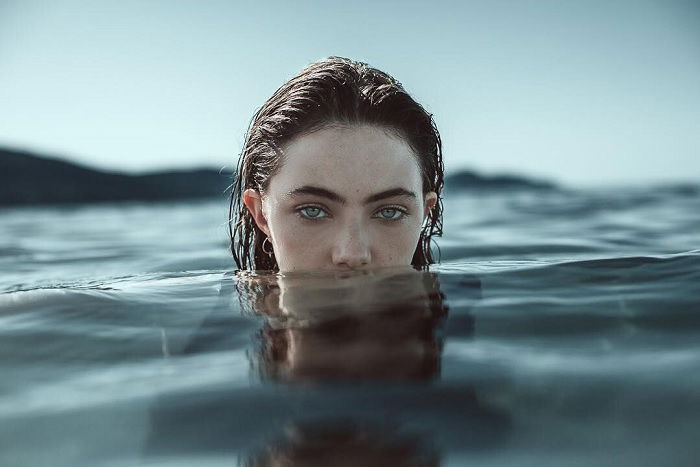































Recent Comments